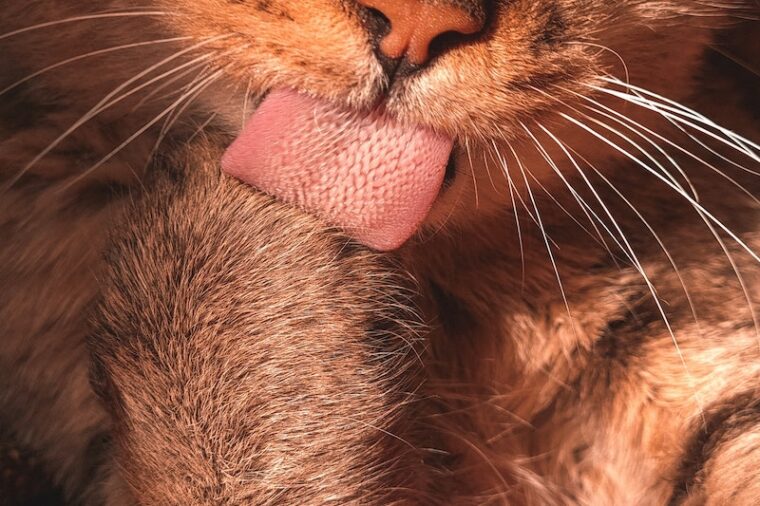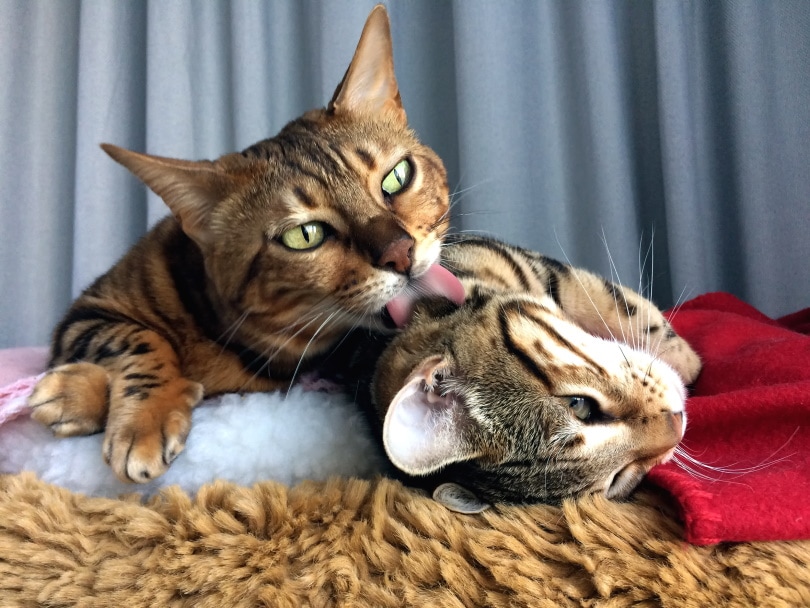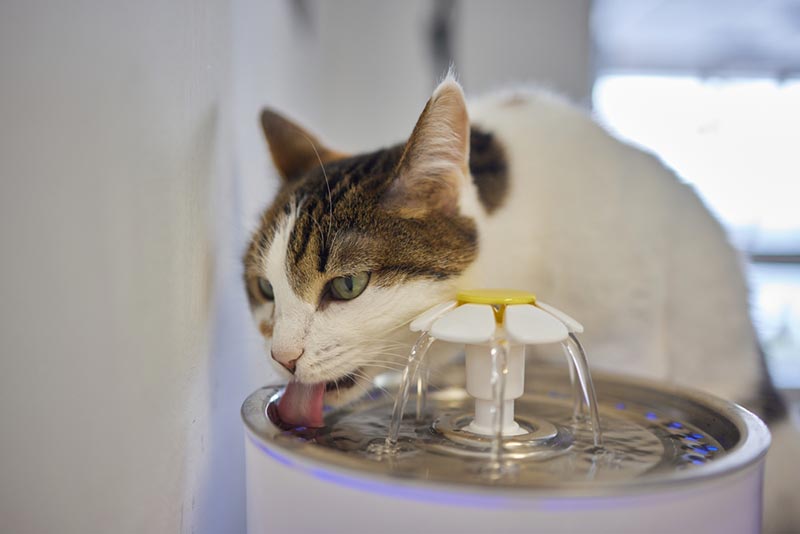
Cats spend a lot of time throughout the day using their tongues. Cats groom themselves constantly, eat multiple times per day, and they also drink water when they can. Each one of these activities heavily involves a cat’s tongue. Cats’ tongues are very different from our own and serve multiple purposes. If you have ever been curious about your cat’s tongue, you are not alone. Cats’ tongues are extremely interesting. Here are seven fascinating facts you might not know about your cat’s specialized tongue.
The 7 Facts About Your Cat’s Tongue
1. Cat Tongues Are Rough
If you’ve ever been licked by your cat, you might have been surprised to learn that a cat’s tongue is not smooth like a human or dog tongue. Instead, the tongue is very rough. When a cat drags its tongue against you, it feels like sandpaper.
The reason for this unique and somewhat unpleasant feeling is the presence of papillae. Papillae are tiny hooks that give the cat’s tongue that recognizable rough feeling. The papilla is a unique feature of the cat’s tongue anatomy. If you look at a cat’s tongue under a microscope, you will see hundreds of these tiny barbs covering the tongue. The papillae in the center of the cat’s tongue are longer and larger than the ones that are found on the edges of the tongue.

2. Cat Tongues Contain Keratin
Keratin is a common material found in nature. Keratin famously makes up human hair, human fingernails, wool, feathers, and rhino horns. This natural material is also found as part of a cat’s tongue as well. The barbed papillae along the length of the tongue are made from keratin. That means that the structures that make the rough feeling on your cat’s tongue are made from the same material as your fingernails.
3. Cat Tongues Are the Perfect Grooming Tool
Cats spend a lot of time each and every day grooming themselves. Cats groom themselves by licking their fur. The cat’s tongue is the primary instrument in this process, and it is specifically designed to help them groom themselves. The rough hooks on a cat’s tongue work to remove old fur, dirt, parasites, bugs, and debris from the cat. Some of this material is then swallowed and stored as a hairball, where it grows before being expelled via the mouth.
Cats also use their tongues to distribute oils across their fur. Cats have oils that help repel water, keep their scent hidden from prey, and keep their coats healthy and shiny. The barbs on the tongue help stimulate the oil glands that are found under a cat’s fur so that it can properly coat itself.
Engineers have attempted to scan and replicate a cat’s tongue to test as a grooming tool and have found that the structures of a cat’s tongue make cleaning out hair and fur much easier than traditional hair brushes or combs.

4. Cat Tongues Are Extremely Fast
Cats have extremely fast-moving tongues. When a cat grooms itself, it might look like it is just licking. But upon closer observation, scientists have discovered that cats’ tongues move in four different directions during a typical grooming process. Cats’ tongues extend, expand, sweep and retract. These minute movements occur very, very quickly.
Cats also drink extremely fast. House cats can lap up water four times per second, making it hard to see the individual movement of the tongue. Cats’ tongues move way faster and more intricately than human tongues.
5. Cats Drink Entirely with Their Tongues
Cats drink water entirely with their tongues. That is different from other animals in a variety of ways. Dogs use their tongues for drinking, but they also use their mouths. Cats’ mouths never touch the water that they are drinking. The fast movement of the tongue pulls a column of water upwards into the cat’s mouth without its lips ever having to touch the water source.
Humans drink primarily by suction or gravity. People use their lips and their lungs to suck water into their mouths. Or people put water in a container and then use gravity to get the liquid to fall into their mouths and throat. Cats do none of these things. They simply pull water upwards with their tongue by using their tongue’s speed and agility.

6. Cats’ Tongues Are Used to Strip Skin and Sinew from Bone
In addition to grooming and drinking, a cat’s tongue is also used for hunting and eating. The barbs on a cat’s tongue are also used to strip bone, skin, and meat from their prey. After a cat kills an animal, it will bring the carcass somewhere safe, where it will spend time licking the body clean. With enough time and pressure, the tongue will strip fur, skin, sinew, tissue, and meat from the bones of the animal. This has a variety of benefits. It makes each kill more efficient by allowing the cat to get as many nutrients as possible from an individual corpse. Cleaning the bodies thoroughly also prevents the scent from attracting other scavenging animals to the cat’s location.
If you’ve ever thought that your cat’s licking is painful, that is because it is the same motion that can strip animals down to the bone.
7. Tongues Still Taste
For all of the utility that a cat’s tongue possesses, it still does a very basic job. Cat’s tongues are still used to taste their food, just like our tongues. However, few studies have ever been conducted on a cat’s sense of taste. Scientists do not know if cats taste the same categories that humans taste. What is known is that some cats have taste preferences that are unique, meaning that cats are tasting some sort of flavor pallet. How varied or vibrant that pallet is, is still largely unknown.
While a human’s tongue is primarily used for tasting, a cat’s tongue is used for grooming, drinking, and eating. Tasting is almost an afterthought, or a secondary feature compared to the utility that a cat’s tongue possesses.

Conclusion
Cats’ tongues are very different from human tongues and dog tongues. Cat tongues are rough and serve a variety of different purposes, from drinking to grooming. Cats’ tongues are extremely fast and versatile, especially when compared to human tongues. These seven facts demonstrate how useful and variable the tongue of a cat truly is. While most people have experience with their house cats, these facts also largely apply to big cats as well.
Featured Image Credit: yulia-ilina, Pexels








